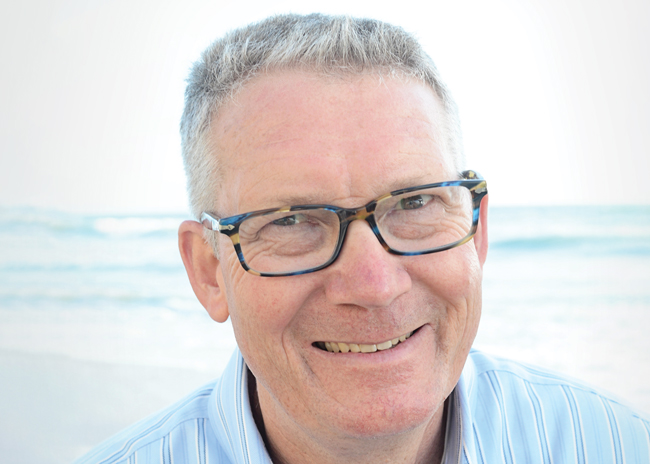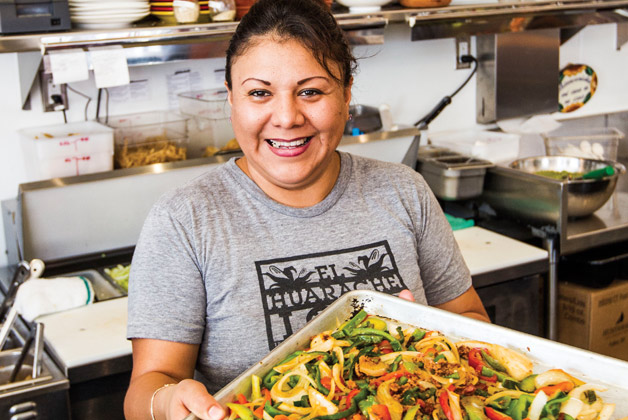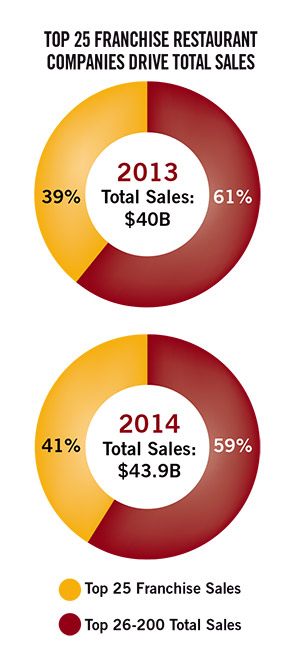Growing a traditional, family dining franchise is not without challenges in the current environment, which seems partial to smaller, Millennial-friendly, fast-casual concepts. But Redding, Calif.–based Black Bear Diner continues to prove that distinctive, family-focused operations that stick to their knitting with familiar, comfort-food favorites; clean, inviting operations; and friendly service can thrive. Now at 20 years old with 74 units in the western U.S., Black Bear ramped up both corporate and franchised growth and targets 100 units by 2018. Chief development officer Doug Branigan explains how they’ll get there.
rd+d: Black Bear Diner has grown largely through franchising. Will that continue?
 Doug BraniganDB: Yes, we’ve grown very organically through franchisees. As restaurants would open up, people would get interested and ask about opening one of their own. And existing franchisees have grown to open multiple units. But about three years ago, we started to increase our corporate growth as well. We’re currently about one-third corporate, two-thirds franchised. This year’s growth will be roughly fifty-fifty corporate/franchised growth. Last year, we opened seven new units, and this year we plan to double that. It’s due to enthusiastic franchisees as well as to our decision to grow and move into more corporate markets. We want to grow the brand, and it’s a good place for our money. We believe it’s important for any franchise organization to invest in and grow its own brand. Doing so sends a great message to franchisees and also allows us to test things and stay completely in tune with brand operations.
Doug BraniganDB: Yes, we’ve grown very organically through franchisees. As restaurants would open up, people would get interested and ask about opening one of their own. And existing franchisees have grown to open multiple units. But about three years ago, we started to increase our corporate growth as well. We’re currently about one-third corporate, two-thirds franchised. This year’s growth will be roughly fifty-fifty corporate/franchised growth. Last year, we opened seven new units, and this year we plan to double that. It’s due to enthusiastic franchisees as well as to our decision to grow and move into more corporate markets. We want to grow the brand, and it’s a good place for our money. We believe it’s important for any franchise organization to invest in and grow its own brand. Doing so sends a great message to franchisees and also allows us to test things and stay completely in tune with brand operations.
rd+d: On the franchise sales side, how tough is it for a family-dining concept to compete for quality franchisees right now?
DB: If you look at what’s going on in the industry today, what is attracting a lot of franchisees is the fast-casual model — pizzas, burgers, salad concepts. That’s what’s hot, and family dining in some cases isn’t as attractive a place for them. It can be more expensive to get into and more complicated to operate, with three meal periods a day. But at Black Bear Diner, we get people who are very interested in and passionate about the brand, people who understand its appeal and its strength. Part of that is the fact that we’ve leveraged a sort of fast-casual model in the family-dining space with greater return. We can convert a restaurant for $800,000 to $1 million, and our average unit volume is $2.4 million, so it’s a great investment-to-sales ratio. A typical fast-casual pizza franchise might top out at $1 million in sales with a $500,000 investment. We’re attracting both individual owner-operators who have restaurant experience and who want to build a unit and grow it in smaller communities as well as experienced, multiunit developers who can quickly build multiple units in a given urban market.
rd+d: Are conversions your prime real estate strategy?
 Black Bear DinerDB: They’re historically how we’ve grown, and we’ll continue to take advantage of those opportunities. We’ve converted former Chili’s, Applebee’s, Denny’s, Coco’s, Big Boy locations. Those types of situations have been our bread and butter, and we’ve gotten very good at doing them. But we’re also doing a former Blockbuster Video end cap right now. So as we expand, we’re looking for those types of opportunities in addition to freestanding buildings, maybe in small but prominent centers where we can do sufficient exterior branding. If the traffic is there, if there’s good visibility, if the size is right and if we can create a Black Bear Diner that’s branded on the exterior to our standards, we’re definitely interested in those types of sites. We can also do build to suits. So, whereas a lot of concepts are confined to a 3,000-square-foot end cap or freestanding building, we take a broad approach and have a lot of options for finding great sites.
Black Bear DinerDB: They’re historically how we’ve grown, and we’ll continue to take advantage of those opportunities. We’ve converted former Chili’s, Applebee’s, Denny’s, Coco’s, Big Boy locations. Those types of situations have been our bread and butter, and we’ve gotten very good at doing them. But we’re also doing a former Blockbuster Video end cap right now. So as we expand, we’re looking for those types of opportunities in addition to freestanding buildings, maybe in small but prominent centers where we can do sufficient exterior branding. If the traffic is there, if there’s good visibility, if the size is right and if we can create a Black Bear Diner that’s branded on the exterior to our standards, we’re definitely interested in those types of sites. We can also do build to suits. So, whereas a lot of concepts are confined to a 3,000-square-foot end cap or freestanding building, we take a broad approach and have a lot of options for finding great sites.
rd+d: Black Bear Diner has described itself as a sort of “anti-chain.” What does that mean in terms of your prototype’s design?
DB: Our restaurants range from 4,000 square feet to 6,400 square feet, and each one has its own unique design and layout, depending on the characteristics of the real estate. No two units are exactly alike, and we don’t feel like a chain; we’re the Black Bear Diner for that community. We do have consistent design elements, however. Large carved bears are signature features at every unit, as are log poles. Every unit is carpeted, has lots of booths and a dining counter. Our signage and wall-decor package is consistent, as are our brand colors. You know you’re in a Black Bear, but a lot of the variables change. Our overall look and feel hasn’t changed significantly over the years, however. We’ve gotten smarter about building our restaurants and have added elements that enhance the brand, but if you walk into our first restaurant, built 20 years ago, and the newest one to open, you’ll find the look and feel are the same.
rd+d: What’s the typical build-out window for a Black Bear Diner?
DB: Permitting time frames can vary considerably from city to city, but from the time a lease is signed, we can usually build a unit in seven to nine months. From the time we get our permit, where the city says we can start construction, we figure 90 to 120 days. Once it’s in our hands, where we control it, an existing restaurant can be converted pretty quickly.
rd+d: As you look to expand, including possibly pushing farther east in the years to come, how would you characterize the brand for guests and potential franchisees who aren’t familiar with it?
DB: We fill a unique space. There are the well-known national, three-meal-period family-dining concepts such as IHOP, Denny’s, and Bob Evans, but we see ourselves as more polished family dining. We compete against them, but we also go up against local, independent breakfast and lunch places and against casual-dining chains at dinner. So we play in a unique space and our brand is distinctive. The bears set us apart, and our guests tell us daily and in marketing research that what they like about us is we make them feel like family. It’s the building, the home-style food, the value, the friendliness of the employees — and when you wrap that all together, it makes them feel like family. That’s exactly what we strive to do, and that’s what came out in the research.
rd+d: You spent years on the operations side before transitioning to franchise development. What do you like about this side?
DB: With real estate under my direction, I get a chance to travel and learn about a lot of great communities by partnering with great people who understand those communities. And whether you’re leading operations or development, it’s all about building a really good team of people who are passionate about what they do. We have that here. Like operations, development is fun, fast paced and challenging, but instead of worrying about food costs, I’m worried about things like building schedules and how I can help franchisees succeed. I don’t want to be just an auditor of the brand; I’m energized by the chance to contribute to its culture and growth.



